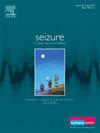癫痫患者认知康复的现状及改善途径:一项针对癫痫专家的跨国横断面调查
IF 2.7
3区 医学
Q2 CLINICAL NEUROLOGY
引用次数: 0
摘要
尽管癫痫患者的社会心理和认知问题具有相关性,但认知康复计划作为癫痫药物和手术治疗的中心护理途径的数据仍然很少。我们的目标是绘制全球不同国家癫痫康复计划的使用、可获得性和特征。方法我们对全球不同国家的癫痫专科医生进行了网络调查。参与者被要求提供有关其所在国家认知康复的可得性、可及性、使用和方法的信息。结果来自66个不同国家的110份回复:45名受访者来自欧洲,35名来自拉丁美洲,14名来自东地中海地区,7名来自亚洲和大洋洲,8名来自非洲,1名来自北美。大多数参与者是在大学医院执业的神经科医生和/或癫痫科医生(96,87%)(69,63%)和照顾成人患者(85,77%)。75名(68%)受访者表示,PWE的任何康复措施都是普遍可用的。对于认知康复,40名(36%)专家报告了这一点,平均服务可及性为5.4±2.5分(满分10分)。在可能的情况下,认知康复主要用于有认知疾病(38.81%)、情绪疾病或共病精神疾病(27.57%)的患者。虽然个体治疗占主导地位(29.62%),但认知康复计划在形式上是异质的——代偿(10.21%)、恢复(12.26%)技术、内部(12.26%)和外部(12.26%)策略与心理教育(15.32%)和心理咨询(16.34%)一起使用,没有明确的优势。在13例(32.5%)病例中,认知康复得到了国家实践标准或州立法机构的支持。结论在世界范围内,针对PWE的认知康复项目比其他形式的康复项目要少。需要制定和协调新的循证程序,以促进这些服务的建立和有效利用。本文章由计算机程序翻译,如有差异,请以英文原文为准。
The current state of cognitive rehabilitation for individuals with epilepsy and pathways for improvement: a multinational cross-sectional survey of epilepsy specialists
Objective
Despite the relevance of psychosocial and cognitive issues for people with epilepsy (PWE), there remains scarce data on cognitive rehabilitation programs as a central care pathway alongside pharmacological and surgical treatment in epilepsy. We aimed to map the use, availability and characteristics of rehabilitation programs for epilepsy across different countries worldwide.
Methods
We conducted a web-based survey of epilepsy specialists practicing in different countries around the world. Participants were asked to provide information on the availability, accessibility, use and methodology of cognitive rehabilitation in their country of practice.
Results
One hundred and ten responses were received across 66 different countries: 45 respondents were from Europe, 35 – from Latin America, 14 – from the Eastern Mediterranean region, 7 – from Asia and Oceania, 8 – from Africa and 1 – from North America. Most participants were neurologists and/or epileptologists (96, 87 %) practicing in university hospitals (69, 63 %) and caring for adult patients (85, 77 %). Any rehabilitation measures for PWE were reported as generally available by 75 (68 %) respondents. For cognitive rehabilitation, this was reported by 40 (36 %) specialists with an average service accessibility of 5.4 ± 2.5 out of 10. When available, cognitive rehabilitation is primarily used in patients with cognitive complaints (38, 81 %), mood complaints or comorbid psychiatric disorders (27, 57 %). While individual sessions predominate (29, 62 %), cognitive rehabilitation programs are heterogeneous in form – compensatory (10, 21 %), restitution (12, 26 %) techniques, internal (12, 26 %) and external (12, 26 %) strategies are used alongside psychoeducation (15, 32 %) and psychological counselling (16, 34 %) without clear predominance of either approach. In 13 (32.5 %) cases, cognitive rehabilitation was supported by national standards of practice or state legislature.
Conclusions
Cognitive rehabilitation programs for PWE are generally less available than other forms of rehabilitation across the world. New evidence-based procedure development and harmonization is required to promote establishment and effective use of these services.
求助全文
通过发布文献求助,成功后即可免费获取论文全文。
去求助
来源期刊

Seizure-European Journal of Epilepsy
医学-临床神经学
CiteScore
5.60
自引率
6.70%
发文量
231
审稿时长
34 days
期刊介绍:
Seizure - European Journal of Epilepsy is an international journal owned by Epilepsy Action (the largest member led epilepsy organisation in the UK). It provides a forum for papers on all topics related to epilepsy and seizure disorders.
 求助内容:
求助内容: 应助结果提醒方式:
应助结果提醒方式:


